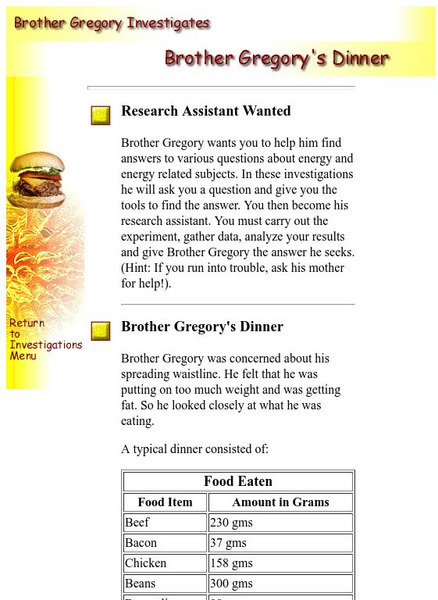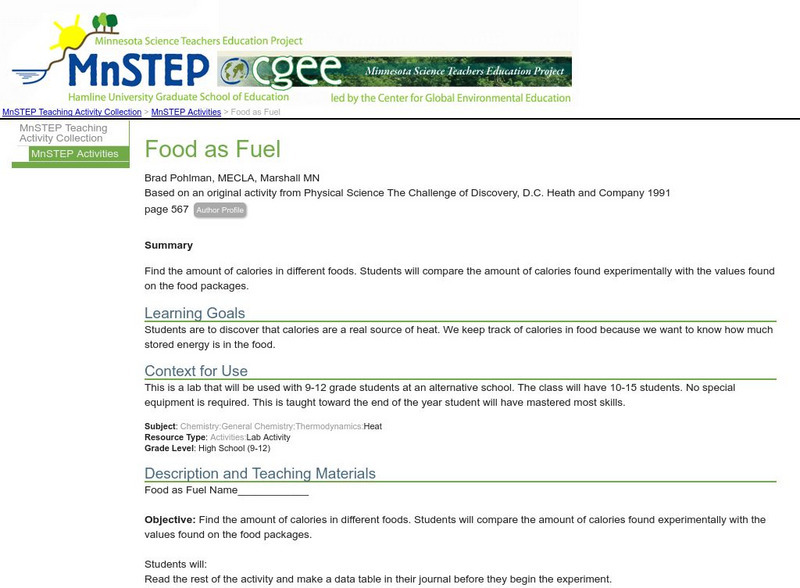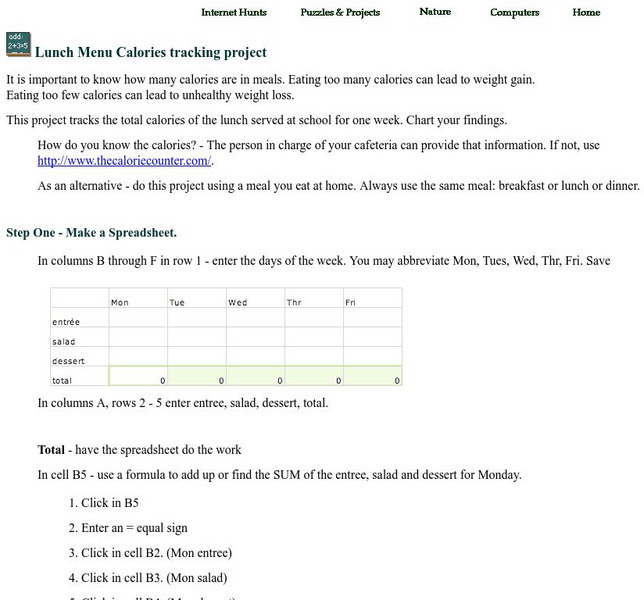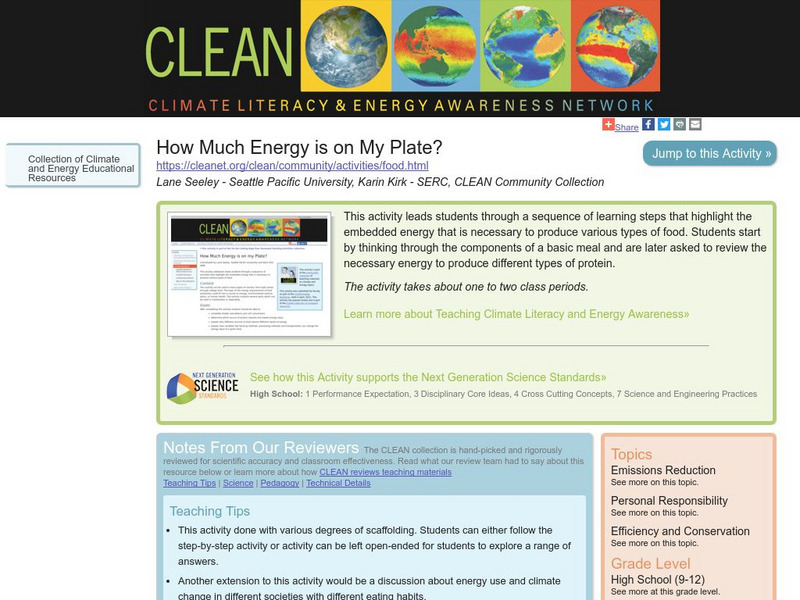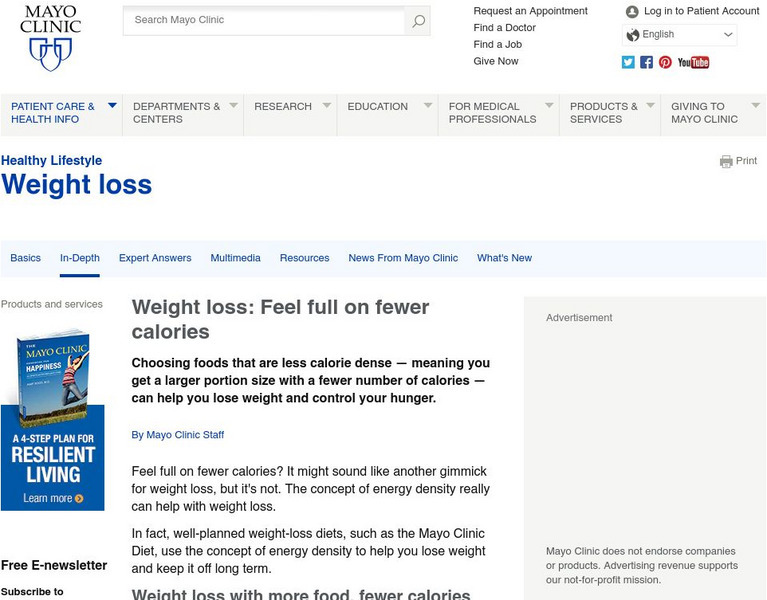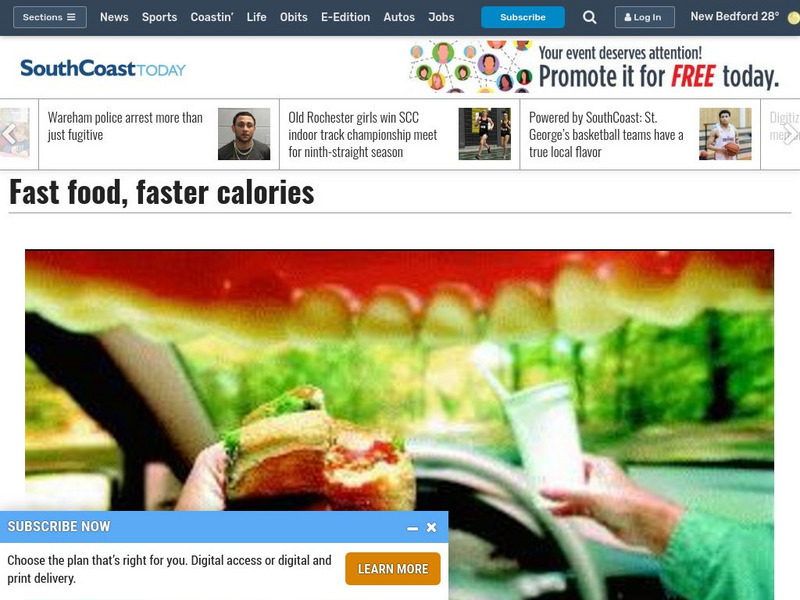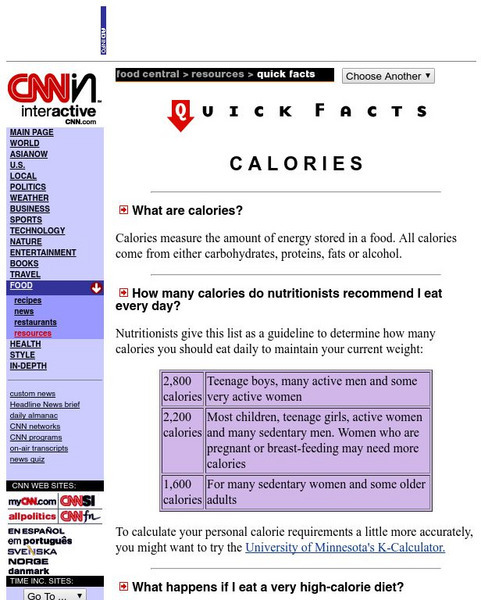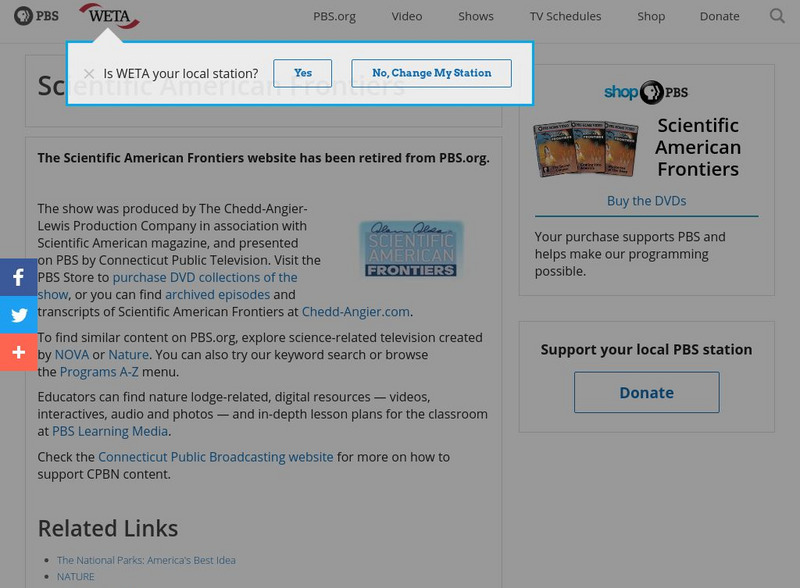City University of New York
Brother Gregory's Dinner: Food Energy Content
Use a virtual calorimeter to investigate the energy content of various foods. The background information is clear and easy to understand.
Texas Instruments
Texas Instruments: Holt Modern Chemistry: Energy Content of Foods
This probeware Lab Energy Content of Foods from the chapter Causes of Change uses a temperature probe to calculate the temperature change of the water to determine how much energy was released when food samples burn.
PBS
Pbs: Scientific American: Never Say Die: Eat Less Live Longer
This site from the PBS production "Never Say Die" provides a section on how to eat less and live longer. The first part of this site discusses food and nutrition. The second part is an activity in which you can make a calorimeter. The...
Science Education Resource Center at Carleton College
Serc: Food as Fuel
Students find and compare the amount of calories found experimentally with the values found on the food packages.
Cynthia J. O'Hora
Mrs. O's House: Lunch Menu Calories Tracking Project
Maintain a healthy diet to maintain a healthy weight. Students will track their meals for a week, entering the food and caloric intake. After collecting the data and reviewing the spreadsheet, lead students in discussions of the results.
Climate Literacy
Clean: How Much Energy Is on My Plate?
This activity leads students through a sequence of learning steps that highlight the embedded energy that is necessary to produce various types of food. Students start by thinking through the components of a basic meal and are later...
PBS
Pbs Teachers: Fast Fats: An Analysis of America's Obsession With Fast Food
Analyze parts of a food label, and determine the amount of fat and calories in average foods. Conduct an observational experiment and examine the food choices of classmates.
PBS
Pbs Teachers: Scientific American: Fat and Happy?: Counting Calories
Explore the concept of the calorie. Determine the calories/gram of the burned food by measuring its mass, and make conclusions about the experimental design.
Mayo Clinic
Mayo Clinic: Energy Density & Weight Loss:feel Full on Fewer Calories
This article is medium-sized in length and provides great information on the subject. Links are provided for additional information as well.
National Geographic
National Geographic: What the World Eats
National Geographic presents a visual application to illustrate what types of daily diet caloric intake is from 1961-2011. Views of the whole world and breakdowns of individual nations are shown.
National Health Museum
Access Excellence: Food and Calories Lesson Plan
This lesson plan from Access Excellence offers sample charts and an answer key which helps students guess the caloric content of a variety of foods and then check their answers.
Other
South Coast Today: Fast Food, Faster Calories
A personal account of eating at fast food restaurants. Learn how you can still eat at fast food restaurants without consuming all the calories you need in one meal.
CNN
Cnn: Quick Facts on Calories
How many calories should you eat a day? Just what is a calorie? What foods should I avoid? Click here and find the answers to these questions and more.
PBS
Pbs Teachers: About All You Can Eat: Truth or Consequences
Demonstrate how calories are measured by building a calorimeter to measure the transfer of heat energy during a chemical or physical change. Test and record data on the calories in a peanut.
